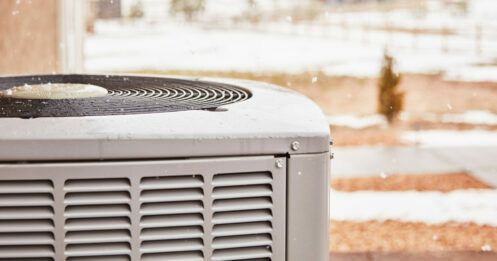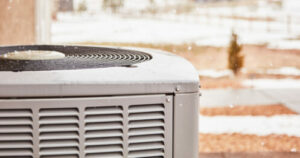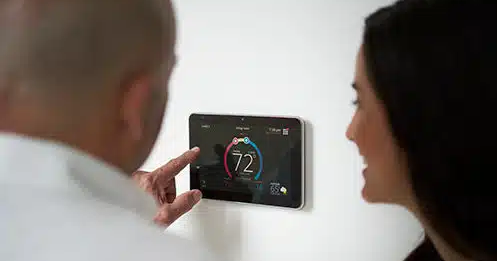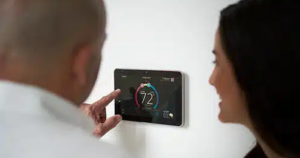Golden State Comfort: Ensuring a Cozy Winter With Riverside Heating System Care
In the heart of Riverside’s winter, where the days are crisp and the nights make you want to cuddle up on the couch with a blanket, the season’s charm is in full swing. In these cherished mid-winter moments, your home is calling you with the promise of warmth. The key to this uninterrupted warmth comes with a well-maintained heating system with Dragonfly Heating & Cooling’s heating services. It is working silently behind the scenes to create a sanctuary from the season’s frosty embrace.
Navigating Winter Warmth: The Why’s and How’s of Heating System Care
Maintaining a reliable heating system in Riverside is about so much more than repair and upkeep. You want it to help craft an environment that stands with you against the chill of California winters. This comprehensive care encompasses a series of critical checks and adjustments. It involves everything from the precise calibration of your thermostat to the meticulous cleaning of your air filters.
Each part of the heating services is designed to ensure that your heating system is not just functioning but thriving. For Riverside residents, this means basking in the warmth of a well-tended home that promises efficiency and comfort throughout the cooler months.
Ensuring Winter Warmth with Expert Heating System Care
Heating services are your strategy for a winter defined by warmth and well-being. Here are the ways that regular attention to your heating system can transform your Riverside home into a haven of warmth and efficiency.
- Optimal Performance through Preventive Maintenance
- Maximizing Energy Savings with Efficiency Upgrades
- Enhancing Comfort with Duct Sealing and Insulation
- Promoting Healthier Living with Indoor Air Quality Enhancements
- Securing Peace of Mind with Emergency Preparedness
Preventive Maintenance for Optimal Performance
During Riverside’s winter, when every degree of warmth is a treasure, the role of regular heating maintenance becomes crystal clear. It’s about the ongoing, reliable performance of your heating system through the coldest months.
- Clean Filters, Clear Air: Regularly replacing or cleaning air filters is a simple step that maintains airflow and heat distribution, ensuring every corner of your home protects you against the cold.
- Seal the Leaks: Checking your ductwork for leaks and sealing them will help to prevent heat loss, and it is your defense against overworking your heating system. That means that it will deliver only what you need.
- Lubrication and Calibration: The smooth operation of moving parts and accurate thermostat settings mean your heating system isn’t working harder than it should, saving you from the worry of mid-winter malfunctions.
This is all about ensuring that the comfort of your home is as constant and steadfast as the Riverside winter itself.
Efficiency Upgrades for Energy Savings
Upgrading to energy-efficient heating options can transform how your home uses energy.
- Modern Heating Systems: Embrace the advancements in heating technology with energy-efficient models that warm your home while also gifting you with lower utility bills.
- Incentives and Rebates: Take advantage of local rebates that make upgrading to efficient heating systems not just smart but also kind to your finances.
- Smart Controls: Programmable thermostats and intelligent heating controls are your partners in efficiency. They allow for the precise management of your home’s temperature and energy usage.
This winter, let energy efficiency be the theme in your Riverside home. The right upgrades can make a world of difference, creating savings and sustainability.
Duct Sealing and Insulation for Improved Comfort
The efficiency of your home’s warmth is a top priority this time of year. You want to make sure that the heat isn’t just coming into your house but is reaching you. Properly sealed and insulated ductwork is what will make sure this is true for your home.
- Seal the Escapes: Professional sealing of ductwork stops warm air from sneaking out. That is how you know it will make it where you need it most, and it will keep your living space uniformly cozy.
- Insulate for Integrity: Insulation around ducts acts like a snug blanket, holding in the heat, preventing loss, and maximizing the efficiency of your heating system.
- Professional Assessment: An expert evaluation of your ductwork can identify hidden leaks and insulation gaps, providing targeted improvements for better warmth distribution.
With these steps, the warm air in your home stays exactly where you need it, surrounding you with comfort that’s both felt and financially wise.
Indoor Air Quality Enhancements for Healthier Living
In the Riverside winter, while homes are sealed against the cold, the air inside can become a stale repository for allergens and irritants. Making sure that you have clean air is just as important as the warmth that fills your rooms.
- Purifiers as Protectors: Air purifiers serve as guardians against invisible airborne particles. They ensure that the air you breathe is as clean as a crisp winter’s morning.
- Humidity Helpers: The right humidity level can transform a room from a dry, static-charged space to an oasis of comfort, and humidifiers are the key to this transformation.
- Fresh Air Influx: Ventilation systems work silently but effectively to exchange stale indoor air with fresh outdoor air, subtly revitalizing your home’s atmosphere.
In Riverside, maintaining indoor air quality isn’t just a seasonal task; it’s a cornerstone of a healthier, more comfortable home life.
Emergency Preparedness for Peace of Mind
Even the best-maintained Riverside heating systems can hiccup on the coldest of days. It’s these moments when a well-thought-out emergency plan provides more than comfort; it provides peace of mind.
- Reliable HVAC Services: Knowing who to call when the unexpected happens ensures that help is just a phone call away, minimizing any discomfort.
- Alternative Heat Sources: Having backup heating options like space heaters or fireplace inserts means you’re ready, ensuring continuous warmth.
- Plan in Place: A clear, actionable emergency plan for heating failures keeps a minor inconvenience from becoming a major issue.
With a strategy for the unexpected, you can enjoy the winter’s charm with confidence, knowing you’re prepared for whatever the season brings.
Embrace Winter Assurance: Take Action for Your Heating System Now
As the Riverside nights draw in and the temperature dips, taking action to secure the warmth and efficiency of your home is so much more than just a convenience. It is a necessity for your daily comfort. With winter already upon us, now is the time to ensure your heating system is in top condition, safeguarding your comfort and your pocketbook.
Don’t let the cold catch you off guard. Reach out to us at Dragonfly Heating & Cooling and take the steps today to guarantee a warm tomorrow.











